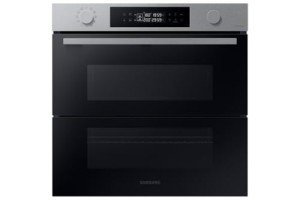The Comprehensive Guide to Built-In Ovens: A Modern Kitchen Essential
Built-in ovens have actually become a staple in modern kitchens, combining visual appeals, performance, and space efficiency into a single device. As homeowners pursue both practicality and style, understanding the functions, advantages, and considerations of built-in ovens can significantly enhance the cooking experience. This article explores what built-in ovens are, their different types, setup considerations, and FAQs to assist consumers make informed decisions.
What is a Built-In Oven?
A built-in oven is a kitchen home appliance created to be integrated into kitchen cabinetry, creating a smooth, cohesive try to find the kitchen. Unlike freestanding ovens, which inhabit additional floor area, built-in ovens are enclosed within wall systems or cabinets. They are readily available in various setups and sizes, enabling customized options that cater to the requirements of diverse homes.
Types of Built-In Ovens
Built-in ovens can be classified into different types based on their features and cooking approaches. Here are a few of the most common types:
Single Built-In Ovens
- Best for little cooking areas and homes with modest cooking needs.
- Generally have one primary cooking compartment, developing a compact footprint.
Double Built-In Ovens
- Perfect for avid cooks and larger households.
- Features 2 different cooking compartments for versatile meal preparation.
Wall Ovens
- Set up at eye level for easy gain access to.
- These ovens frequently feature convection innovation for even cooking outcomes.
Steam Ovens
- Use steam to cook food, preserving moisture and nutrients.
- Great for health-conscious individuals.
Combination Ovens
- Combine microwave and conventional oven performances.
- Deal versatility for quick meals and traditional baking.
Italian or European Style Ovens
- Often designed with special aesthetic appeals and advanced cooking technologies.
- Popular for high-end kitchen designs.
Benefits of Built-In Ovens
Built-in ovens offer a range of advantages that attract modern-day house owners seeking both performance and visual appeals. A few of these benefits include:
- Space Efficiency: Built-in ovens conserve valuable counter space, which is specifically beneficial in smaller sized kitchen areas.
- Improved Aesthetics: With a custom-made look, built-in ovens boost the total design of the kitchen while offering a seamless integration with cabinetry.
- Flexible Cooking Capacity: Available in various sizes, these ovens deal with the cooking needs of various homes, from single occupants to large households.
- Ease of access: The setup at eye level makes built-in ovens easier to access, minimizing the risk of spills or injuries when putting or eliminating hot meals.
- Lower Energy Consumption: Many built-in ovens featured energy-efficient modes that help in reducing electric usage in time.
Setup Considerations
Installing a built-in oven needs mindful planning and consideration. Here are some aspects to bear in mind:
- Dimensions: Before buying a built-in oven, determine the area readily available to make sure an appropriate fit. Built-in ovens come in particular basic sizes, so it is important to select the right one.
- Ventilation: Adequate ventilation is required for efficient operation. Guarantee there is a correct exhaust system that adheres to local building regulations to prevent getting too hot.
- Electrical Requirements: Built-in ovens might need specific electric outlets or circuitry. Seek advice from with a certified electrician to guarantee that the setup complies with security standards.
- Professional Installation: Although some homeowners decide for DIY setup, hiring an expert can help ensure security and correct setup for ideal efficiency.
Upkeep Tips for Built-In Ovens
Preserving your built-in oven not just extends its lifespan but also guarantees efficient operation. Here are some essential upkeep tips:
Regular Cleaning:
- Wipe down interior surface areas after each use to avoid accumulation.
- Use vinegar and baking soda for non-toxic cleaning.
Check Seals:
- Inspect the door seals to prevent heat loss.
- Replace damaged seals promptly.
Test Thermostat:
- Periodically inspect the temperature level precision with an oven thermometer. Built In oven and hob packages with installation as required.
Service Annually:
- Schedule expert upkeep once a year to check electrical parts and ensure safe operation.
| Upkeep Task | Frequency | Purpose |
|---|---|---|
| Tidy interior | After each use | Prevent accumulation and smells |
| Inspect seals | Regular monthly | Ensure no heat leaves |
| Test thermostat | Every 6 months | Examine temperature level accuracy |
| Expert service | Each year | Make sure optimal performance |
Frequently Asked Questions About Built-In Ovens
1. Do built-in ovens come in different sizes?Yes, built-in ovens are offered in numerous sizes to fit various kitchen setups and cooking needs. It is important to measure the available area before purchasing. 2. Can built-in ovens be used as regular ovens?Absolutely. Built-in ovens function like regular ovens,
permitting you to bake, broil, and prepare a variety of meals. 3. Are built-in ovens energy-efficient? Lots of built-in ovens come with energy-saving functions and are developed to use less
electrical energy than freestanding models. 4. For how long does setup take?Installation time can vary based on complexity but usually varies from 1 to 3 hours. It is advisable to work with an expert for optimal outcomes. 5. What is the life-span of a built-in oven?With appropriate upkeep, built-in ovens can last anywhere from 10 to 15 years or longer.
Built-in ovens offer a plethora of benefits for modern families, integrating convenience, energy efficiency, and stylish style into one option.
When picking and installing a built-in oven, it's crucial to consider the type that best fits your cooking practices, readily available area, and aesthetic preferences. By comprehending the benefits, setup requirements, and upkeep needed, property owners can raise their cooking experience and produce spectacular kitchen areas that impress both household and guests alike. Purchasing a built-in oven can be a beneficial addition that simplifies cooking, enhances home value, and savors culinary thrills for years to come.

